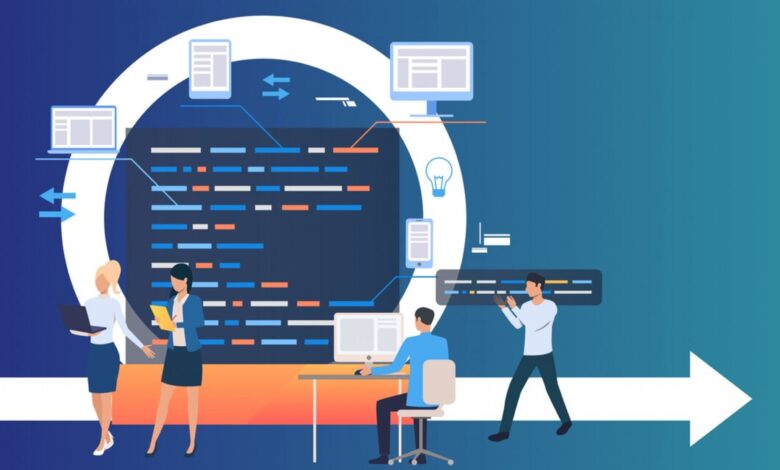A Simple Guide to Understand the Stages of Software Development Life Cycle for Startups

Developing high-quality software is what makes a change in the world of fast-moving startups, which often lack much time and resources. It could be an entirely new app or a web platform launch, even automating the business processes, the best roadmap for this development journey is very essential. That’s where the concept of the Software Development Life Cycle comes into action.
The SDLC is an organized framework to guide the entire software development process-from the initial idea to deployment and beyond. The stages of software Development Life cycle ensure that projects stay on track, meet business goals, and are delivered on time and within budget by breaking the process into clear, manageable stages. For startups, following the SDLC is not just the best practice but a necessity to build scalable, reliable, and user-centric products.
Many of the founders will think that this is very basic, and everyone knows this. Yes, I agree that this is very basic, but for extraordinary things, the basics should be clear. Manier time in the excitement, hurry, or tension, people forget this core concept and end up being unsatisfied with their software solution. We don’t want you to make mistakes; we want to make sure that you understand and follow each step of software development so that you get the software of your dreams.
In this article, we will explain the main steps of the SDLC and see how each of these phases will help startups overcome complexities in software development, reduce risk, and ultimately maximize success. Whether you’re new to software development or looking to refine your process, you’ll be learning the SDLC as a toolset to create the best products for users and fuel growth in your business.
Stages of Software Development Life Cycle
1. Requirement Gathering and Analysis
Gathering and analyzing requirements are the backbone of your project, which forms the first stages of software development life cycle. In this phase, close coordination with stakeholders like business owners, product managers, users, and the development team happens to outline goals, features, and expectations about the software.
Key activities involve:
- Conducting interviews and surveys with users about their pain points and needs.
- Creating use cases and user stories to describe the behavior of the system.
- Analyzing feasibility in the space of technical, financial, and business analysis.
The minimum viable product will be critical in the startup. Without knowing precisely what your software needs to accomplish, it can get off track in no time, wasting precious time and resources. Startups must identify a product that has all the core features necessary to solve users’ most important problems, focus development, and get it done faster.
2. System Design
After gathering the requirements, it’s time to design the system. The design phase defines how your software will function and how its components will interact. A well-thought-out design ensures that the software is scalable, secure, and maintainable in the long run.
This phase includes two sub-stages:
- High-Level Design (HLD): This defines the general architecture, technology stack, modules, and data flow. You decide how the software will be structured and the technologies it will use.
- Low-Level Design (LLD): This phase provides more detailed specifications of the inner workings of individual components such as algorithms, database structure, and APIs.
Design decisions are crucial for startups. Startups should select technologies that are aligned with their future goals and can sustain growth. Saving time and money down the line can be done using modern frameworks and scalable cloud services. A solid foundation for your product is developed by collaborating with experts.
3. Implementation (Coding)
Now begins the phase that makes the magic all happen—coding. During this phase, the development team starts writing code as specified in the design.
Important aspects for the phase are:
- Coding standards: Writing clean, maintainable, and well-documented code.
- Version control: Using tools like Git to track changes to the code and collaborate effectively.
- Modularize the code: Breaking down the code into reusable parts with a relatively easier maintenance and updating in the future.
For startups, coding should emphasize building the MVP with core features. This ensures that development gets accelerated and will allow you to test your idea in the market quickly, obtain feedback, and then iterate.
In this phase, the quality of the code produced is crucial to the software’s future success. You should hire software developers who can match industry standards and reduce maintenance and scaling issues.
4. Testing
Testing will ensure that your software is bug-free and has the expected functionality. From the testing phase, both developers and the QA testees test the software in more detail to check out bugs, fix them before the launch, and also to look out for performance, security, and usability checks.
The following are the types of tests; include:
- Unit test: Testing individual unit or units of the software to ensure that they function properly.
- Check-in integration testing is checking how well different modules interact with each other.
- System test: Testing for the entire system as a package to ensure each component works out well together.
- User Acceptance Testing (UAT): end-users test this software to authenticate that it should match their needs.
For startups, testing is a highly important stage of software development to deliver a reliable product. You can’t afford to get a product launch with bugs or poor performance. Proper testing reduces the chance of getting adverse comments from users and ensures your software provides the right experience for users. Testing an MVP in a live setting offers authentic feedback before scaling.
5. Deployment
After successful testing, the software is ready for deployment. This is the phase where the product is moved to a live environment and made available to users.
Deployment includes several key activities:
- Release planning: Deciding on the release strategy—whether to deploy all at once or in phases.
- Server and environment setup: Configuring the necessary infrastructure, databases, and networking to support the software.
- Data migration: If there is already data in the old system, this needs to be migrated into the new system.
For startups, deployment should be smooth and well-coordinated. It is essential that the infrastructure can handle user traffic, especially if your product is expected to scale rapidly. Startups often deploy their products incrementally to manage risks and gather feedback before a full rollout.
6. Maintenance and Support
The SDLC does not stop once the software is deployed. The last phase is the ongoing maintenance and support. This is one of the very crucial stages of software development life cycle, this ensures the software continues to run optimally after deployment and is updated to keep abreast with changes in business.
Major activities for this phase are;
- Bug fixes: Fixing all the problems that crop up after launching the software.
- Performance monitoring: The system is monitored continuously to ensure that it runs smoothly.
- Feature updates: New features or enhancement of existing ones as per user feedback and evolving business requirements.
This is the critical phase for keeping a startup’s users engaged and satisfied. Over time, software needs to adapt to new user expectations, bugs, and scalability issues. Continuous improvement based on feedback and monitoring can make all the difference between a successful product and a failed one.
Conclusion
The SDLC is a tested framework that can guide startups through the complicated process of building, launching, and maintaining software. By following the stages of requirement gathering, design, implementation, testing, deployment, and maintenance, the startup ensures that the quality and reliability of the software delivered are high, above the business objectives, and usable by the user.
Implementing the stages of the software development life cycle helps startups also achieve the following benefits:
- Save on development time and costs.
- Reduce the failure risk by raising concerns early on.
- Enhance cooperation between business teams and developers.
- Scalable and maintainable software that will enable long-term sustainability.
Efficient software development is what makes the difference between a leader and a laggard in the fast-paced world of startups. Be it building an MVP or getting ready for growth, taking a structured approach to software development through SDLC will get you off to the right start. If you need to ensure a hassle-free project, then a partnership with a well-established software development company can give you the advice and technical knowledge to make your product come into existence.
In case you have found a mistake in the text, please send a message to the author by selecting the mistake and pressing Ctrl-Enter.
https://techplanet.today/storage/posts/2025/01/20/KTGyrO3NkAJaCaeNGSW2tv8GwWkFenxRQ657LgCl.jpg
2025-01-20 06:34:31




